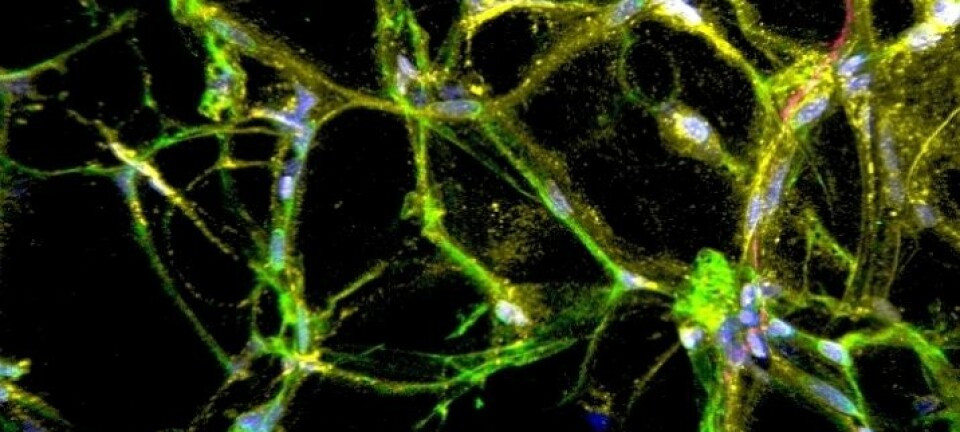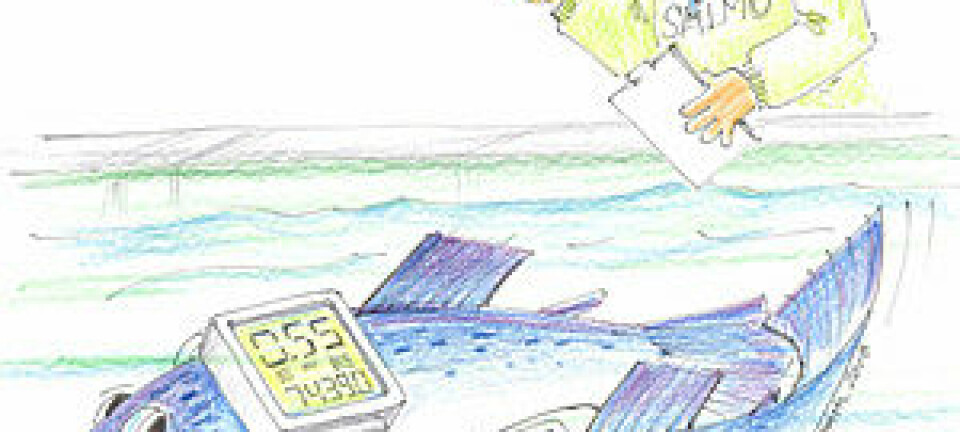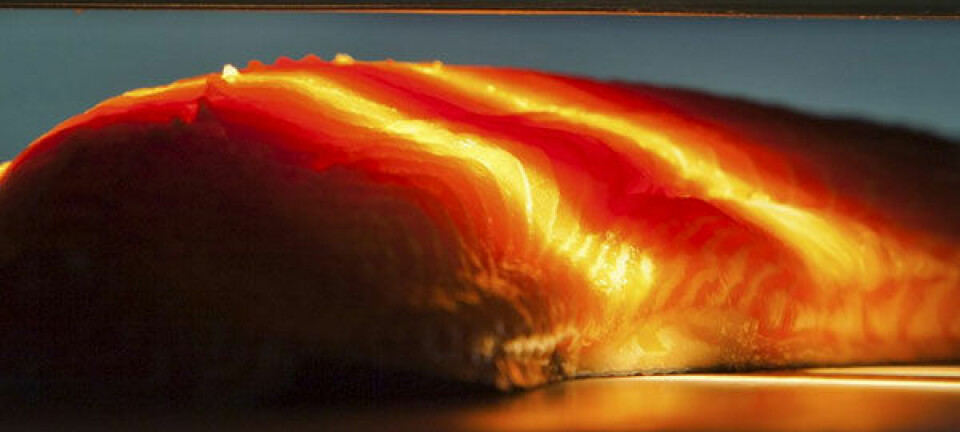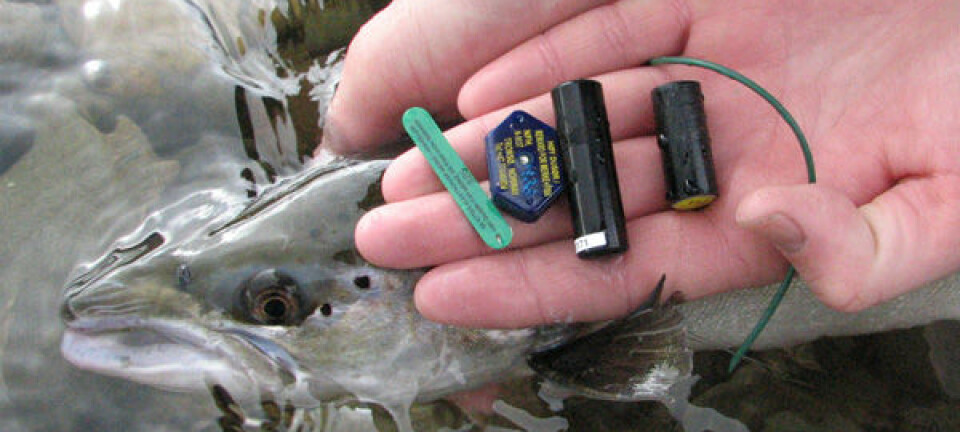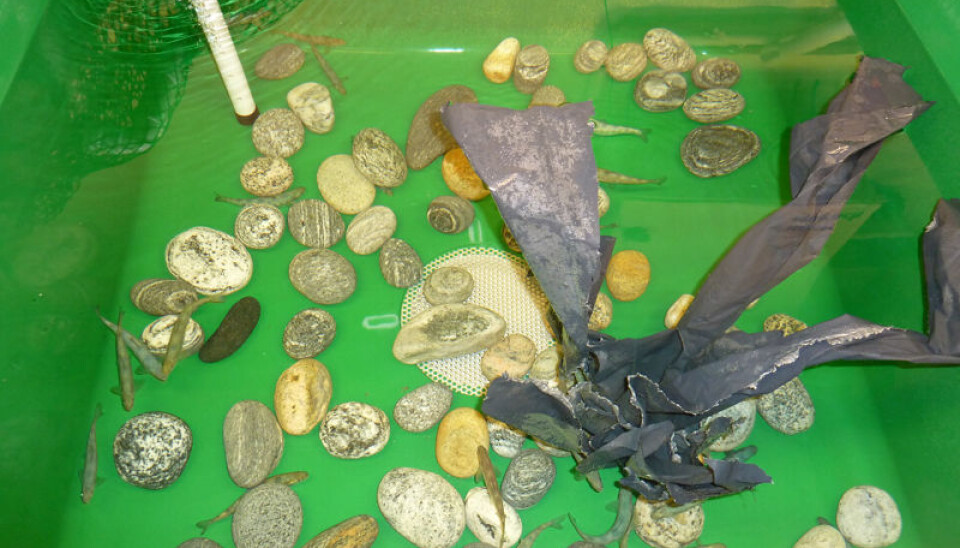
Salmon are shrewder in a natural environment
Juvenile fish get some smarts after spending eight weeks in a more stimulating tank.
Denne artikkelen er over ti år gammel og kan inneholde utdatert informasjon.
Rivers and lakes are often restocked with fish raised in containers and tanks that bear little likeness to a natural environment.
The design of these nurseries for small salmon has been shown to have an impact on their intelligence.
Researchers from the University of Bergen (UiB) conducted an experiment using wild salmon fry from the Voss River in Hordaland, on Norway's southwest coast. Ten-month-old salmon were brought out of their ordinary monotonous hatchery tanks and placed in tubs that provided a more stimulating environment. The tubs were "decorated" with various sized rocks and artificial plants.
Eight weeks later the scientists could determine that these salmon were smarter than ones in a control group.
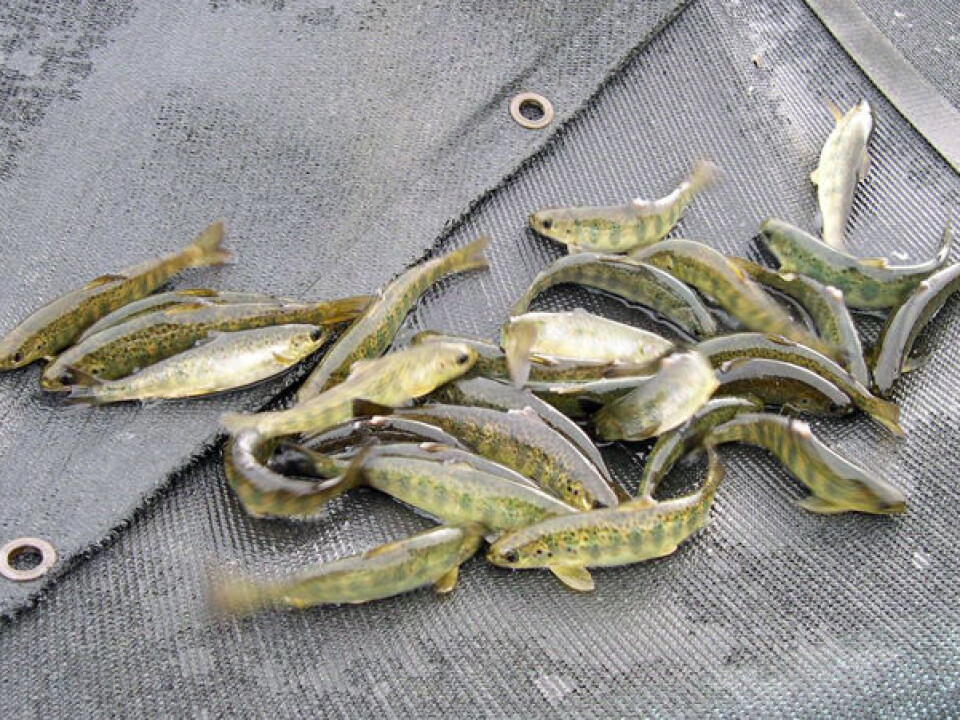
“The environment a fish grows up in is important for its development and behaviour and its brain,” says UiB Professor Anne Gro Vea Salvanes.
She teamed up with UiB and Uni Research colleagues in Bergen to test the effect of environmental enrichment on the cognitive abilities of farmed fish.
Better survivors
The routine, monotonous life that fish undergo during their time at a hatchery provides little realistic training for their future lives in a gushing river.
Salmon that are given a more stimulating “playground” stand a better chance of surviving in the wild.
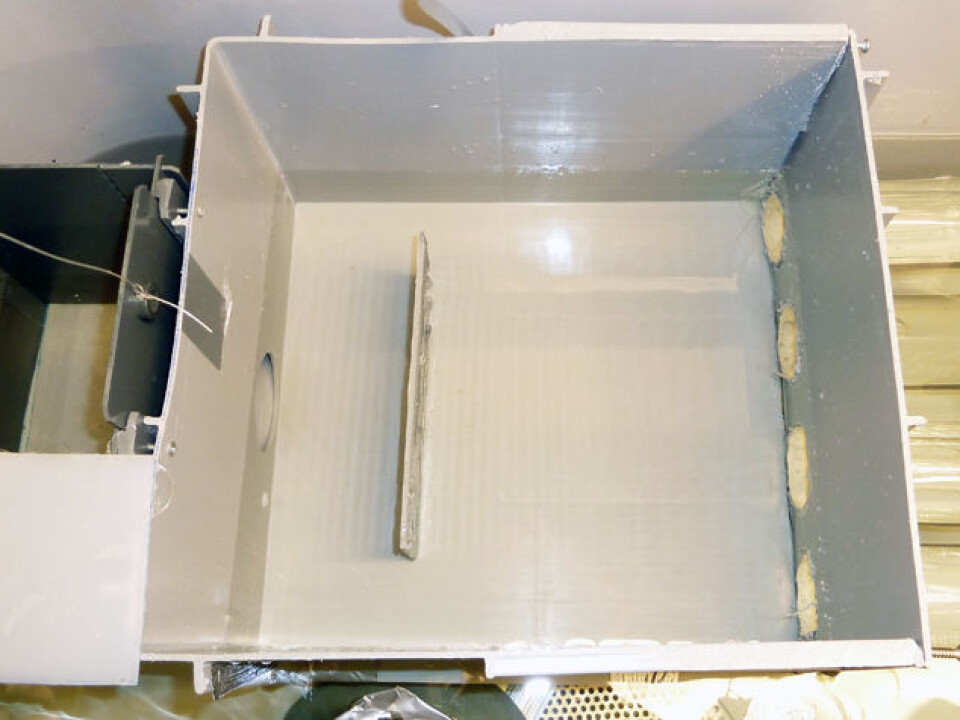
Fish from hatcheries are often used to supplant wild fish in watercourses where over-fishing, hydropower, fish farming or other factors have reduced stocks.
“If we increase the survivability we might be able to make do by stocking watercourses with fewer, but smarter fish,” says Salvanes.
A hatchery in Voss Norway has been used for the tests.
Hide and seek
The young fish that were tested were placed in tubs filled with small rocks. The stones were sizeable enough for the fish to swim around and hide amongst.
The fish were also given the opportunity to interact with artificial aquatic plants that were anchored to the bottom of the tubs and that undulated in the current like real plants.
The fish could hide when they wanted to and they also were observed forming schools and swimming together around the plastic plants.
The environment was remodelled every third day.
This contributed to the stimulation of their brain development over the course of just eight weeks. These fish were then compared to others their own age from the same stock that had spent their life in traditional tanks without any special stimuli.
Smarter fish
The scientists found that the fish that had been treated to a more stimulating environment had greater cognitive powers – in practice they learned more easily.
To test this the fish were placed in a labyrinth one by one. The time it took for them to find their way out was monitored.
The test was repeated every day for seven days. Other fish were allowed to swim on the outside of the labyrinth to entice the isolated fish inside to find its way out as fast as it could.
Gradual improvement
The salmon who had started their lives in more interesting digs gradually grew better at solving the maze.
The fish in the control group also learned to swim out of the labyrinth, but at a much slower pace.
There had been no difference between the fish groups during the first two days, but once a week had past, the control group had collectively spent much more time swimming through the labyrinth than the smart group, which had been raised in the more inspirational tanks.
After seven such trips the smart salmon had spent a total of about five minutes less making their way to the end of the labyrinth.
“These are really clear figures,” says UiB Senior Engineer Knut Helge Jensen, who was responsible for the statistical analyses.
Random selection
These findings were backed up by a study of the brains of randomly selected fish.
Among the fish that had lived in a more stimulating environment, the scientists found larger quantities of a chemical indicator for brain development, NeuroD1 mRNA, than among fish from the control group.
The changes were detected in the section of the fish brain related to learning and memory.
The study has been presented in the scientific journal Proceedings of the Royal Society B.
Increased knowledge
Tame animals will typically have less developed brains that their wild kin. This goes for fish too.
The researchers write that our understanding of fish brains is making rapid progress.
Studies of many species of fish show they are a lot more savvy than we give them credit for, and that they can adapt to changes in their environments.
-----------------------
Read the Norwegian version of this article at forskning.no
Translated by: Glenn Ostling







